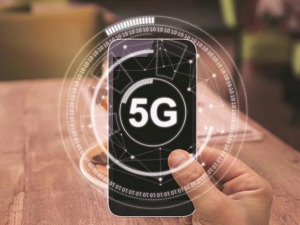
India's Fast 5G Rollout: How PM Modi's Vision is Making it Possible

Overview of 5G technology
5G technology is the latest wireless networking technology that has been developed to offer faster internet speed and better connectivity than its predecessor, 4G.
It promises to bring revolutionary changes to the way people interact with technology, enabling faster download and upload speeds, more reliable connections, and enabling new use cases for the internet of things (IoT) and augmented reality (AR) applications. With the increasing demand for faster internet connectivity and digital transformation across industries, 5G technology is poised to play a critical role in shaping the future of technology.

India’s role in the global 5G rollout
India has emerged as one of the major players in the global 5G race. The Indian government has been actively promoting the adoption of 5G technology in the country, with the aim of transforming India into a digitally empowered society and a knowledge economy. India’s ambitious goal to become a global hub for 5G technology has put it in direct competition with other major players like China, the US, and South Korea.
PM Modi’s statement on India’s 5G rollout:
PM Modi recently announced that India is leading the world in the deployment of 5G technology. He stated that the country has launched the world’s largest and most affordable 5G network, which will play a critical role in driving the country’s digital transformation and economic growth.
Key factors contributing to India’s fast 5G rollout:

India’s fast 5G rollout can be attributed to several factors, including the government’s proactive policies and investments in the telecommunications sector, the country’s large and growing consumer base, and the increasing demand for faster internet connectivity and digital transformation across industries. Additionally, India’s competitive and diverse telecommunications market has encouraged the development of new and innovative 5G technologies.
Impact of India’s 5G rollout on economic growth and development:
The fast rollout of 5G technology in India is expected to have a significant impact on the country’s economic growth and development. It will create new job opportunities, drive innovation and entrepreneurship, and enable new use cases for IoT and AR applications. The adoption of 5G technology is also expected to attract foreign investment and enhance India’s global competitiveness in the technology sector.
Challenges and concerns surrounding India’s 5G rollout:
Despite the benefits of 5G technology, there are concerns about its potential impact on security, privacy, and health. Additionally, the high cost of infrastructure and devices needed to support 5G networks may pose a challenge for some consumers and businesses. The government and telecommunications industry must work together to address these concerns and ensure the safe and responsible deployment of 5G technology.
Future prospects and opportunities for India’s 5G technology:
India’s 5G rollout presents significant opportunities for innovation and growth, particularly in the areas of IoT, AR, and smart cities. The development of 5G technology is expected to pave the way for new business models and promote the growth of emerging technologies and startups in India.

Comparison of India’s 5G rollout with other countries:
India’s 5G rollout is comparable to other leading countries in terms of technology and infrastructure. However, India’s competitive telecommunications market, diverse consumer base, and the government’s proactive policies are expected to give it a competitive edge in the global 5G race.
Role of private and public sectors in India’s 5G rollout:
The fast rollout of 5G technology in India is the result of the collaborative efforts of both the private and public sectors. The government has provided a supportive policy framework and invested in critical infrastructure, while the private sector has developed new and innovative technologies to support the deployment of 5G networks.
The reasons for the 5G Rollout
The reason for India’s fast 5G rollout is the government’s push towards local manufacturing of 5G equipment. In October 2020, the government launched a Rs. 12,195 crores ($1.6 billion) scheme to boost domestic production of telecom equipment, which includes 5G gear.
The initiative aims to cut India’s dependence on foreign telecom equipment manufacturers, such as China’s Huawei and ZTE, and create a self-reliant domestic telecom manufacturing ecosystem. This move will not only help India in becoming more self-reliant but will also create job opportunities in the country’s telecom manufacturing industry.
However, despite the government’s efforts, India still faces challenges in rolling out 5G nationwide. One major challenge is the lack of 5G-compatible devices, which makes it difficult for consumers to utilize the high-speed network. Additionally, India’s telecom operators face financial challenges due to intense competition and mounting debt, which could slow down their 5G rollout plans.
Conclusion
In conclusion, India’s fast 5G rollout is a testament to the country’s commitment towards technological advancements and innovation. The government’s push towards local manufacturing of 5G equipment and the aggressive expansion of telecom infrastructure has played a crucial role in making India a leader in 5G technology. However, there are still challenges that need to be addressed before India can fully realize the potential of 5G. With the right policies and investments, India can overcome these challenges and establish itself as a leader in the global 5G race.







